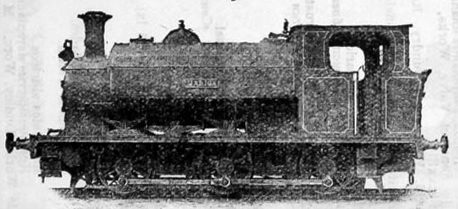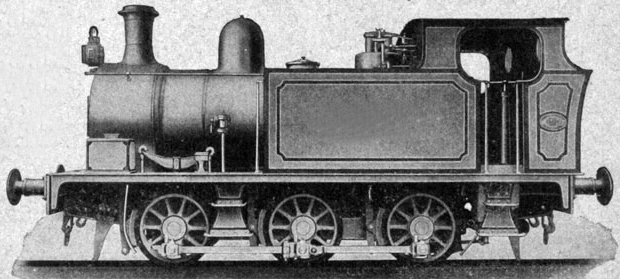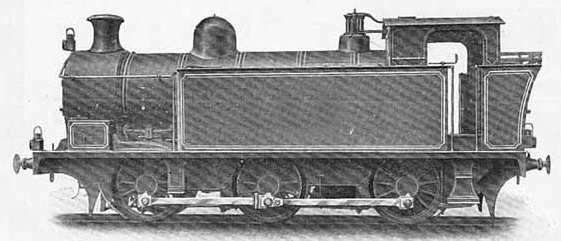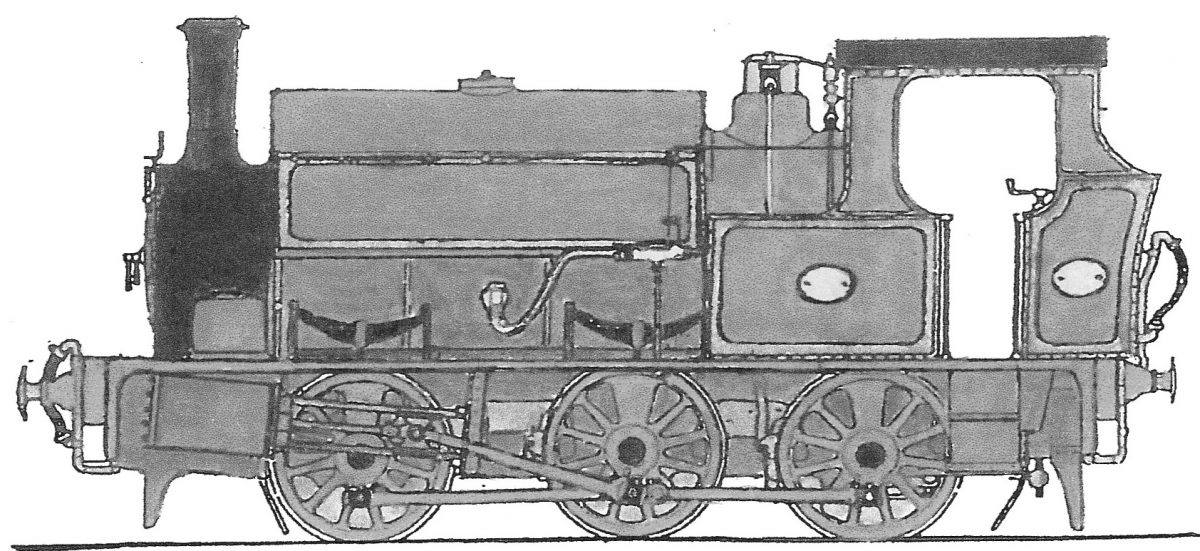



The company was formed in Leeds in 1860 by William S Hudswell with John Clarke. Hudswell had served his apprenticeship at Kitson and Co where John Clarke was the works manager. Hudswell by this stage had progress to become the chief draughtsman at Kitson and Co.
The finances to form the company were provided by Dr William Clayton which allowed the firm to be set up in part of the old railway foundry of E B Wilson & Co. The firm at this stage used the name the Railway Foundry.
The first product built in 1861 was a stationary engine which was completed in April 1861.
In 1866 Mr Rodgers joined the company from a small smithy and it became Hudswell, Clarke and Rodgers until Rodgers left in 1880 when the company name was changed to Hudswell, Clarke and Company.
Hudswell died in 1882 and Clarke a few years later in 1890. At this time the family of Dr Clayton, who had provided the initial finances, became more involved in the engineering side of the business.
By 1900 around 575 locomotives had been built and this increased to about 1,600 locomotives by 1927. A sign of the growth of the business was that the workforce had risen to between 400 and 500 by 1914.
Hudswell Clarke benefitted from the construction of the Manchester Ship Canal. They supplied locomotives for the construction project and subsequently supplied the bulk of the fleet of locomotives associated with the canal which became known as the Canal class.
The Port of London Authority were another major customer of Hudswell, Clarke and this spawned another standard design of engine which would become known as the PLA type. This too found orders from other industrial systems, particularly in colliery work.
In 1911 Hudswell Clarke entered into an agreement with Robert Hudson for the manufacture of narrow gauge locomotives. This arrangement produced sixteen standardised designs, designated ‘A’ to ‘Q’, which ranged from four-coupled (0-4-0) 5 hp engines to six-coupled (0-6-0) 55 hp models. The designs were sufficiently flexible to allow for the various track gauges in use. Over the years, 188 locomotives were supplied to these designs.
During the 1920s the production of diesel locomotives gradually outstripped the building of steam locomotives.
In 1929 a new design was developed from the earlier 14inch by 20inch outside cylinder 0−4−0ST which had a short tank. The new locomotives had the stroke increased to 22inch and the provision of a full length tank to increase the water capacity. Thirty-five of these standard gauge locomotives have been produced with only minor modifications for individual customer requirements.
In the 1930s the company manufactured narrow gauge steam outline diesel-hydraulic locomotives for use at amusement parks around the country.
During the Second World War the company diversified into armaments, as did so many other engineering companies. In the post-war period Hudswell, Clarke and Co Ltd (as it was by then) was closely involved in many secret programmes, including the British nuclear weapon programme. The airframe for the first British nuclear bomb, Blue Danube was manufactured by Hudswell Clarke at its Roundhay Road, Leeds. The airframe for Red Beard, the second generation tactical nuclear bomb, followed with that for Violet Club, the Interim Megaton Weapon; and there were many other projects.
In the 1952 Hudswell Clarke built twenty (8480-99) class 9400 0-6-0PT locomotives for the Western Region as a subcontractor to the Robert Stephenson & Hawthorn. None of these have been preserved.
The contraction of defence manufacturing in the mid-1960s contributed to the sale and demise of the company.
In 1961 the firm built the last of the 1,807 steam locomotives it produced in its 101 years of life.
The locomotive part of the business is now part of the Hunslet Engine Co. Locomotive-building was always only one part of a diverse product inventory that included underground diesel-powered mining locomotives, hydraulic pit-props and related mining equipment.
The last steam locomotive (Works No 1888) built for the Esholt Sewage Works was unusual as it was the first locomotive in the world designed to use wool grease as fuel. This grease is extracted in the Esholt plant from the woollen mill sewage and proved to be very successful.
Preserved Locomotives
I have only included standard gauge locomotives which are preserved in Britain. I have not included fireless locomotives although I may add them later.
Preserved Austerity Locomotives built to the Hunslet Design
In addition to building locomotives to designs produced by Hudswell Clarke the company also built Fifty Austerity 0-6-0ST engines for the War Department during 1944-1946 as a sub contractor to the Hunslet Engine Company. Fourteen (68006,7,25-26,60-69) of these were bought by the LNER in 1945-46. Of these none have been preserved. One (68067) was sold by the LNER to the coal industry in 1963.
Three examples of the fifty built by Hudswell Clarke to the Hunslet Engine Company survives –
| Works No | Built | Name/Number | Location |
| 1752 | 1943 | WD75091 Robert 68067 | Midland Railway Centre |
| 1776 | 1944 | WD71499 | Embsay & Bolton Abbey Steam Railway |
| 1782 | 1945 | WD71505 WD118 Brussels | Keighley & Worth Valley Railway |
Other Preserved Hudswell Clarke Locomotives
| Works No | Built | Name | Type | Location |
| 402 | 1893 | Lord Mayor | 0-4-0ST | Keighley & Worth Valley Railway |
| 431 | 1895 | 431 | 0-6-0ST | Chasewater Railway |
| 526 | 1899 | Hawarden | 0-4-0ST | Railway Museum Penrhyn Castle |
| 544 | 1900 | P.D. No 10 | 0-6-0ST | Big Pit Mining Museum |
| 555 | 1900 | GWR 813 | 0-6-0ST | Severn Valley Railway |
| 679 | 1903 | 31 Hamburg | 0-6-0T | Keighley & Worth Valley Railway |
| 680 | 1903 | 32 Gothenburg | 0-6-0T | East Lancashire Railway |
| 750 | 1906 | Waleswood | 0-4-0ST | Chasewater Railway |
| 895 | 1909 | No9 | 0-6-0T | Summerlee Museum of Scottish Industrial Life |
| 1026 | 1913 | No31 | 0-6-0ST | Fawley Hill Railway |
| 1208 | 1916 | Nightingale & Seacole | 0-6-0ST | Embsay & Bolton Abbey Steam Railway |
| 1223 | 1916 | Vesta | 0-6-0T | East Lancashire Railway |
| 1243 | 1917 | Richboro | 0-6-0T | Aln Valley Railway |
| 1308 | 1918 | Rhos | 0-6-0ST | Rocks by Rail, Cottesmore |
| 1309 | 1917 | Henry De Lacy ll | 0-4-0ST | Middleton Railway |
| 1334 | 1918 | No1 Sir Thomas | 0-6-0T | Buckinghamshire Railway Centre |
| 1366 | 1919 | Renishaw Ironworks No6 | 0-6-0ST | Aln Valley Railway |
| 1369 | 1919 | MSC 67 | 0-6-0T | Middleton Railway |
| 1435 | 1922 | Nellie | 0-4-0ST | Bradford Industrial & Horses at Work Museum |
| 1450 | 1922 | No 8 Dorothy/Thomas | 0-6-0ST | Embsay & Bolton Abbey Steam Railway |
| 1464 | 1921 | MSC No 70 | 0-6-0T | Swindon & Cricklade Railway |
| 1539 | 1924 | Derek Crouch | 0-6-0ST | Nene Valley Railway |
| 1544 | 1924 | Slough Estates No3 | 0-6-0ST | Middleton Railway |
| 1604 | 1928 | No4 | 0-6-0ST | The Mid Suffock Light Railway Company |
| 1631 | 1929 | No65 | 0-6-0ST | Tyseley |
| 1632 | 1929 | N05 Patricia | 0-4-0ST | Bygones Victorian Exhibition Street and Railway Museum, Torquay |
| 1661 | 1936 | Ribblesdale No3 | 0-4-0ST | Helical Technology Ltd – Lytham Motive Power Museum (private) |
| 1672 | 1937 | Irwell | 0-4-0ST | Tanfield Railway |
| 1682 | 1937 | Julia | 0-6-0ST | Unknown |
| 1689 | 1937 | No7 | 0-4-0ST | South Yorkshire Transport Museum |
| 1700 | 1938 | Wissington | 0-6-0ST | North Norffolk Railway |
| 1704 | 1938 | No1704 Nunlow | 0-6-0T | Keighley & Worth Valley Railway |
| 1709 | 1939 | No5 Slouh Estates | 0-6-0ST | Embsay & Bolton Abbey Steam Railway |
| 1731 | 1942 | No 20 Jennifer | 0-6-0T | Llangollen Railway |
| 1742 | 1946 | Millom | 0-4-0ST | Buckinghamshire Railway Centre |
| 1800 | 1947 | 1 Thomas | 0-6-0T | Nene Valley Railway |
| 1821 | 1948 | NCB No 140 | 0-6-0T | Embsay & Bolton Abbey Steam Railway |
| 1822 | 1949 | S100 | 0-6-0T | Chasewater Railway |
| 1823 | 1949 | NCB 38 | 0-6-0T | Tanfield Railway |
| 1857 | 1952 | 0-6-0T | Pontypool & Blaenavon Railway | |
| 1864 | 1952 | S103 Firefly | 0-6-0T | Meldon Quarry, Dartmoor Railway |
| 1882 | 1955 | Mirvale | 0-4-0ST | Middleton Railway |
| 1884 | 1955 | S102 Cathryn | 0-6-0T | Ecclesbourne Valley Railway |
| 1885 | 1955 | The Pilling Pig | 0-6-0ST | Fold house Caravan Park, Pilling |
| 1888 | 1958 | Elizabeth | 0-4-0ST | Leeds Industrial Museum |
Works No 573 Burton Ironstone Co Lt 0-4-0ST Narrow Gauge Industrial Locomotive – Handyman. Built in 1900 as a three foot gauge locomotive. Now part of the National Collection which is why it is included in this site.
In addition to the above Hudswell Clarke built Works No 1152 for the Guinness Brewery in Dublin and this locomotive is now preserved.
For XX built locomotives preserved outside Britain go to Preserved Outside Britain by Builder – Hudswell Clarke